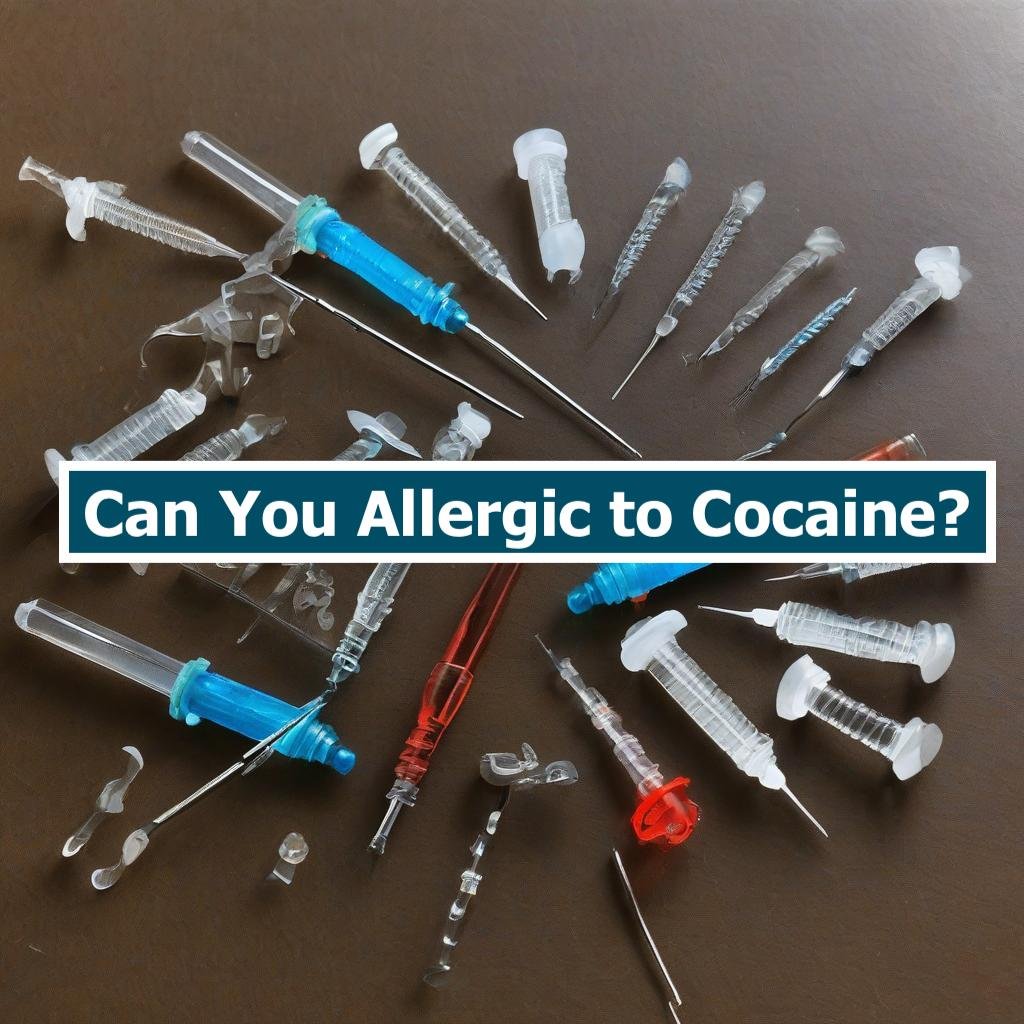Dissolvable stitches, a seemingly magical invention in the medical world, have revolutionized wound closure. Gone are the days of dreaded follow-up appointments for stitch removal. These modern sutures, also known as absorbable sutures, dissolve on their own over time, offering a convenient and seemingly hassle-free solution. However, the human body can be a complex and unpredictable system. While dissolvable stitches are generally safe and effective for most people, a small percentage of individuals can experience allergic reactions to the materials used. This article delves deeper into the world of dissolvable stitches, exploring their advantages, potential drawbacks like allergies, and how to navigate situations where allergies might arise.
What Are Dissolvable Stitches
Dissolvable stitches are typically crafted from synthetic polymers like nylon, polyglactin, or vicryl. These carefully engineered materials are designed to be gradually broken down and absorbed by the body’s enzymes over a predetermined period, ranging from weeks to months. This ingenious design offers several advantages over traditional stitches:
- Convenience Unparalleled: No need for an additional doctor’s visit specifically for stitch removal. This translates to less time spent waiting in appointments and more time dedicated to healing.
- Reduced Cost: Eliminates the cost associated with a separate follow-up appointment for stitch removal. This can be particularly beneficial for patients without insurance coverage or those with limited financial resources.
- Enhanced Comfort: Dissolvable stitches generally become softer and less noticeable as they degrade within the body. This translates to a more comfortable healing experience for the patient, with less irritation and discomfort compared to traditional sutures.
While these advantages are undeniable, it’s crucial to approach any medical intervention with a comprehensive understanding of potential risks and complications.
When Convenience Turns into an Unforeseen Reaction: Demystifying Dissolvable Stitch Allergies
The human body is a remarkable machine with an intricate defense system – the immune system. Its primary function is to protect us from harmful invaders like bacteria and viruses. However, sometimes, the immune system can misinterpret a seemingly harmless foreign object, like dissolvable stitches, as a threat. This triggers an inflammatory response, leading to an allergic reaction.
The exact reasons why some individuals develop allergies to dissolvable stitches while others don’t are still under investigation. However, researchers believe it could be linked to the body’s unique sensitivity to specific synthetic materials used in the sutures.
Spotting the Signs: A Guide to Recognizing Dissolvable Stitch Allergy Symptoms
It’s crucial to differentiate between the normal healing process and the potential signs of a dissolvable stitch allergy. Here’s a breakdown of key indicators to watch for:
- Redness and Swelling: During the initial healing phase, some redness and swelling around the stitched area are to be expected. However, in an allergic reaction, the redness and swelling become significantly more pronounced, often exceeding what would be considered normal healing. The affected area might also feel hot to the touch.
- Itching and Pain: Intense itching and throbbing pain around the stitches can be a telltale sign of an allergic reaction. Normal healing might involve some mild discomfort, but it shouldn’t be debilitating.
- Pus Formation: While some pus formation is normal during the early stages of healing, excessive pus or a change in the pus color (yellow to green) could indicate infection alongside an allergic reaction.
Early detection and intervention are critical for preventing complications associated with a dissolvable stitch allergy. If you experience any of the above symptoms, it’s vital to consult your doctor immediately for proper diagnosis and treatment.
Who’s at Risk? Unveiling the Risk Factors for Dissolvable Stitch Allergy
While anyone can develop an allergy to dissolvable stitches, some people might be at a higher risk:
- Previous Allergies: Individuals with a history of allergies to other materials, like latex, certain medications, or other synthetic materials, may be more susceptible to developing an allergy to dissolvable stitches. This is because their immune system is already primed to react to specific foreign substances.
- Certain Medical Conditions: People with autoimmune disorders like lupus or rheumatoid arthritis, where the immune system attacks healthy tissues, might have a higher risk of allergic reactions to dissolvable stitches due to their overactive immune response. Additionally, individuals with weakened immune systems, such as those undergoing chemotherapy or living with HIV/AIDS, might be more susceptible to infections alongside allergic reactions.
It’s important to note that these are just potential risk factors. A person with no prior allergies or underlying medical conditions can still develop an allergy to dissolvable stitches.
Seeking Help: Unveiling the Diagnosis and Treatment of Dissolvable Stitch Allergy
Consulting your doctor immediately is vital if you suspect a dissolvable stitch allergy. They will perform a physical examination of the area to determine the existence of a dissolving stitch allergy.
During your doctor’s visit, they will physically examine the wound site. This will involve inspecting the area for redness, swelling, and any signs of pus formation. They will also inquire about your medical history, including any known allergies or underlying medical conditions.
Based on the physical examination and your medical history, your doctor might recommend one or more of the following diagnostic approaches:
- Swab Culture: In some cases, the doctor might take a swab of any pus or discharge from the wound to rule out infection. The swab sample is then sent to a laboratory for analysis to identify any potential bacteria or other pathogens.
- Imaging Tests: Depending on the location and severity of the suspected allergy, your doctor might order imaging tests like X-rays or ultrasounds to get a clearer picture of the underlying tissue and assess for any potential complications beyond the allergic reaction.
Once a diagnosis of dissolvable stitch allergy is confirmed, your doctor will focus on alleviating the symptoms and preventing further complications. Here’s a breakdown of potential treatment options:
- Antihistamines: These medications work by blocking the action of histamine, a chemical released by the body’s immune system during an allergic reaction. This helps reduce redness, swelling, and itching associated with the allergy.
- Corticosteroids: Corticosteroids are powerful anti-inflammatory medications that can help reduce inflammation and swelling around the stitches. They are typically administered in pill form for oral consumption or as a topical cream applied directly to the affected area.
- Pain Medication: Over-the-counter pain relievers like acetaminophen or ibuprofen can help manage any discomfort or pain associated with the allergic reaction.
- Stitch Removal: In some cases, particularly when the allergic reaction is severe or persistent, the doctor might recommend removing the dissolvable stitches. This allows the wound to heal naturally and eliminates the source of the allergic reaction.
It’s important to strictly adhere to your doctor’s prescribed treatment plan and attend all follow-up appointments to monitor the healing process and ensure the allergy is under control.
Preventing the Stitch Sting: Open Communication is Key
The best defense against a potential dissolvable stitch allergy is open communication with your doctor before undergoing surgery. Here are some key steps to take:
- Disclose All Allergies: Be upfront with your doctor about any allergies you have, including allergies to medications, latex, or other synthetic materials. This information allows them to choose dissolvable stitches made from materials you are less likely to be allergic to.
- Discuss Concerns About Dissolvable Stitches: If you are concerned about the possibility of a dissolvable stitch allergy, discuss your concerns with your doctor. They can address your anxieties and explain the likelihood of an allergic reaction based on your individual medical history.
- Allergy Testing (Limited Availability): In some cases, although not routinely available, your doctor might discuss the possibility of allergy testing for dissolvable stitch materials. However, it’s important to note that allergy testing for dissolvable stitches is not yet a standardized practice and may not be widely available.
Beyond the Basics: Exploring Additional Considerations
While dissolvable stitches offer a convenient solution for wound closure, there are some additional considerations to keep in mind:
- Not Suitable for All Wounds: Dissolvable stitches might not be suitable for all types of wounds. For deep wounds, wounds under tension, or wounds in areas with a high risk of infection, your doctor might opt for traditional stitches that can be removed later.
- Delayed Healing: In some cases, dissolvable stitches might take longer to dissolve completely compared to the expected timeframe. This shouldn’t necessarily be a cause for alarm, but it’s important to keep your doctor informed about any noticeable delays.
- Scars and Wound Appearance: Similar to traditional stitches, dissolvable stitches can leave some scarring after they dissolve. The extent of scarring can vary depending on several factors, including the type of wound, the location of the wound, and your individual body’s healing process.
Conclusion: Dissolvable Stitches – A Boon with a Caveat, But Knowledge is Power
Dissolvable stitches are a valuable innovation in the medical field, offering a convenient and effective solution for wound closure for most people. However, it’s important to be aware of the potential for allergic reactions and to communicate openly with your doctor before undergoing surgery. By understanding the benefits, potential drawbacks, and early signs of allergic reactions, you can ensure a smooth healing process. Remember, knowledge and open communication with your doctor are powerful tools for navigating any potential complications associated with dissolvable stitches.


